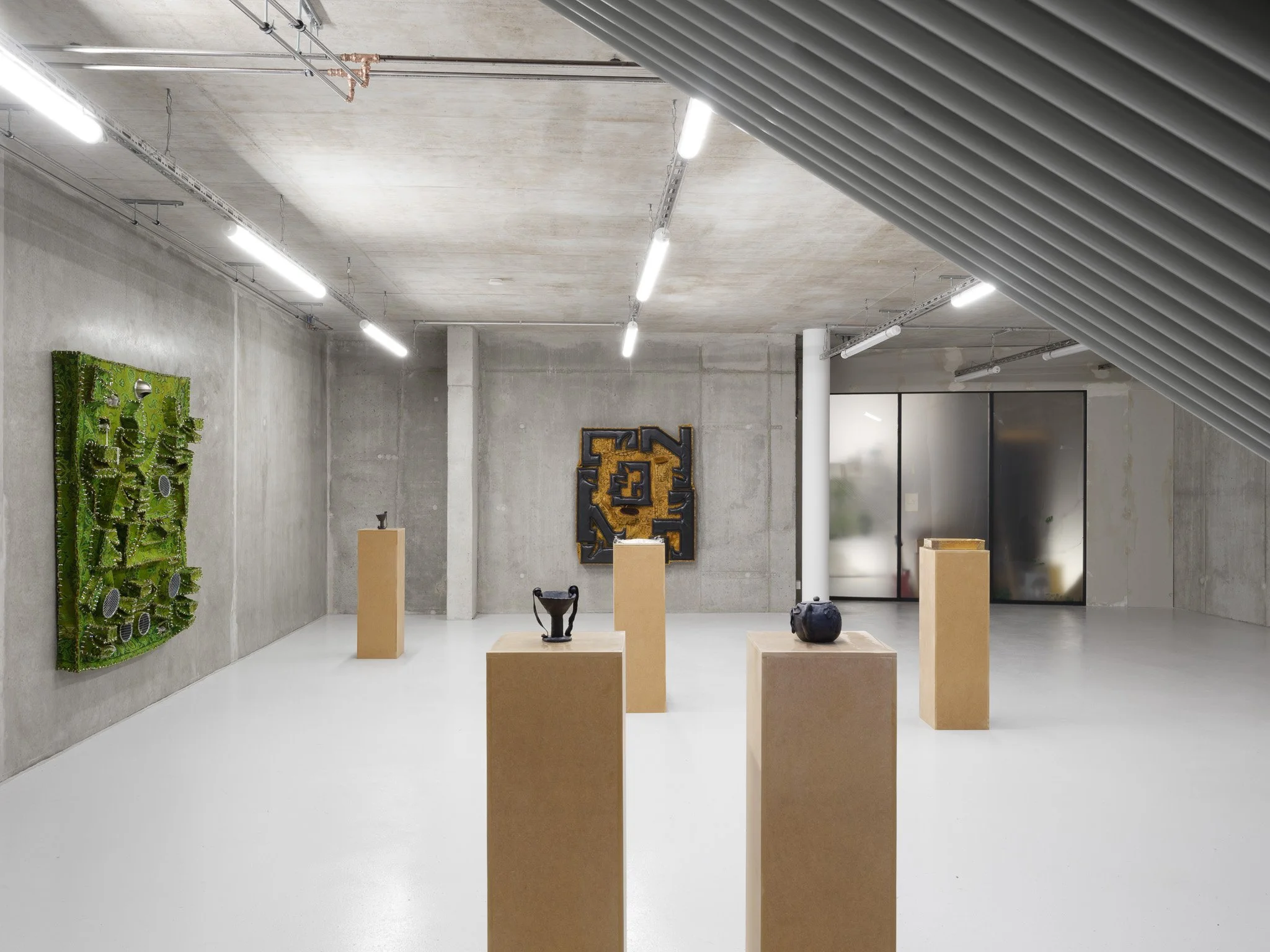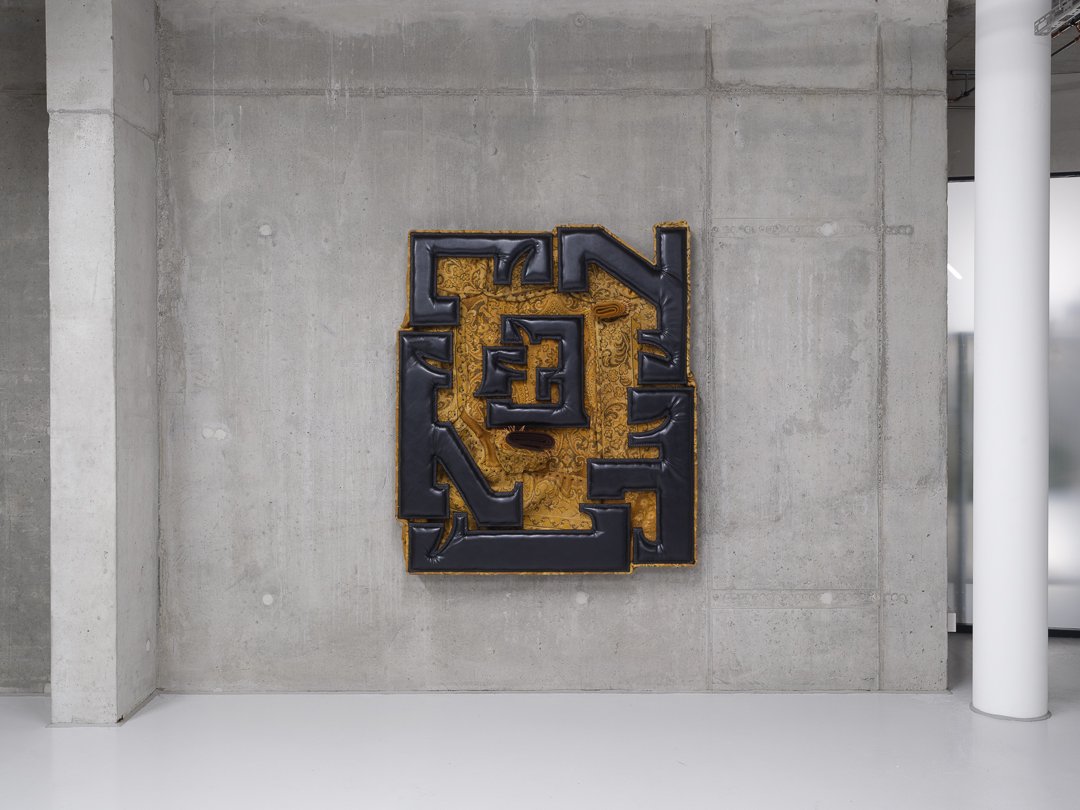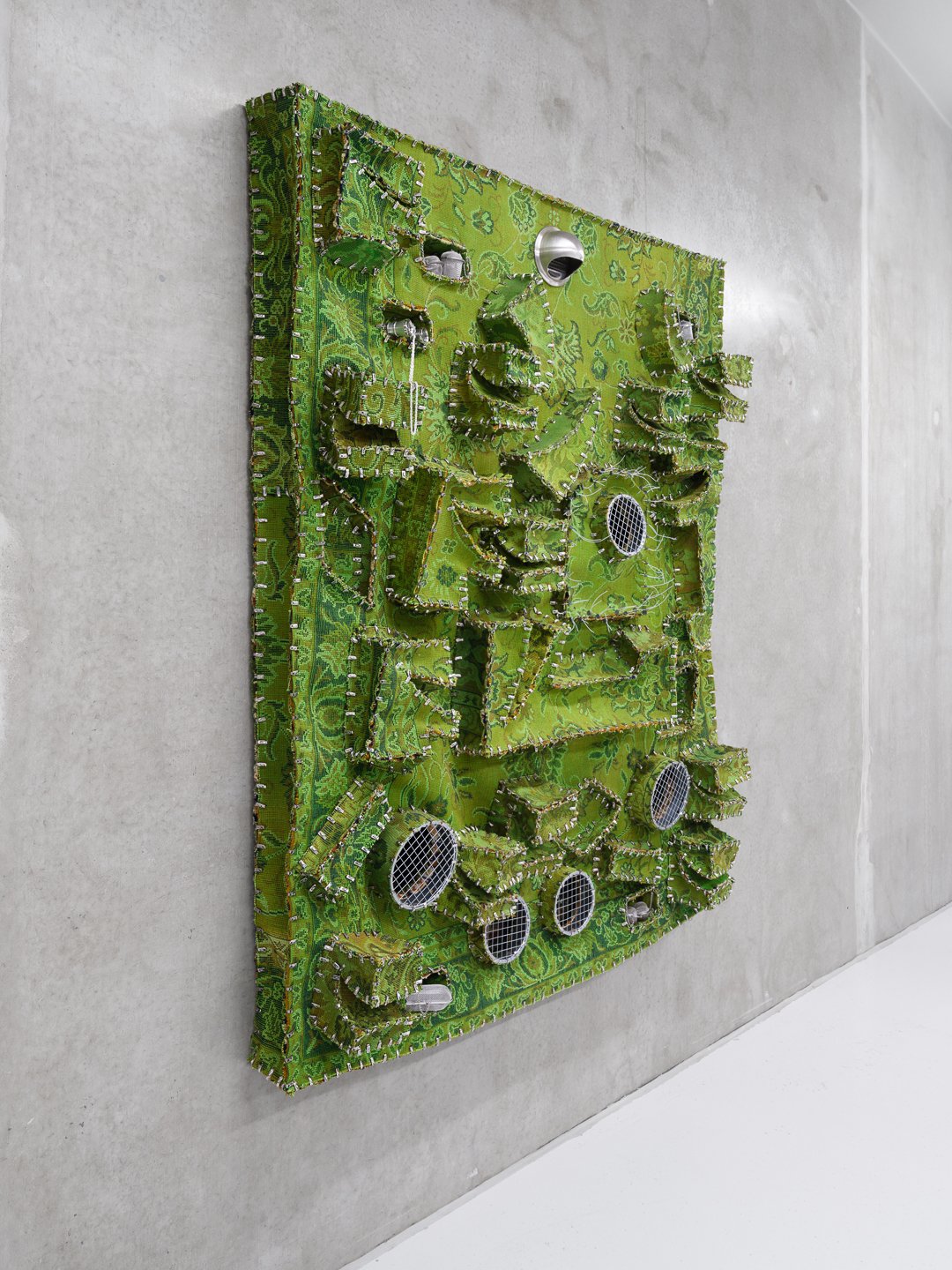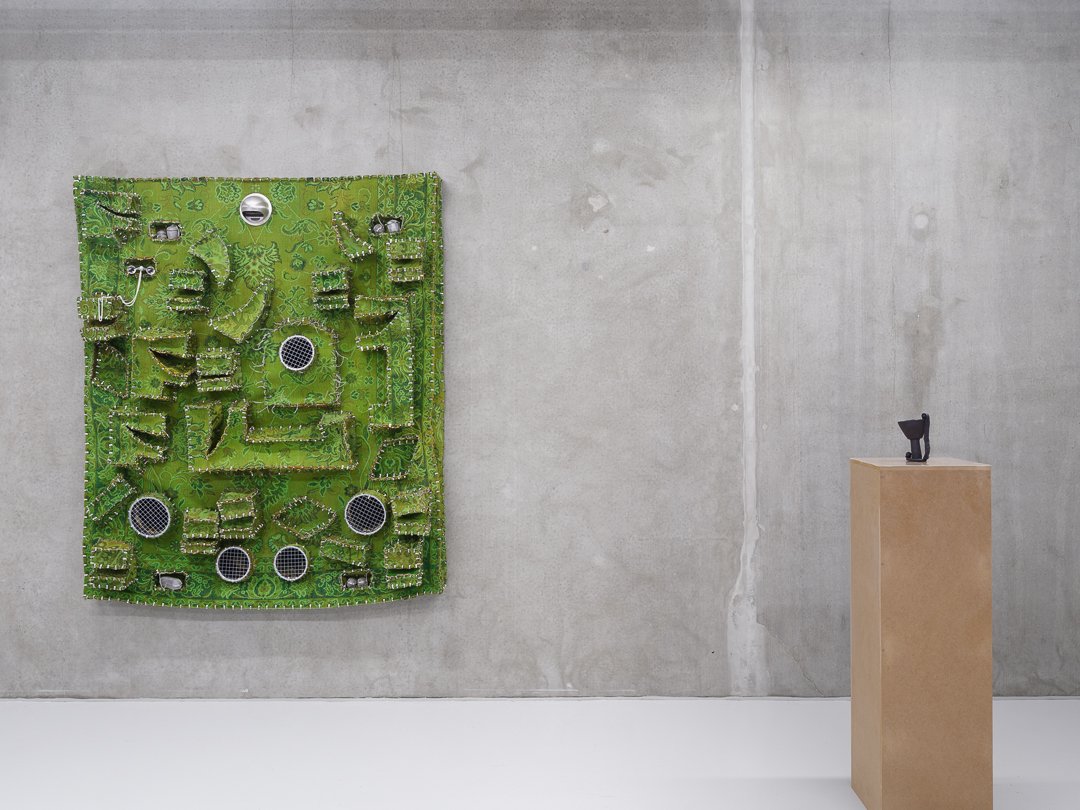
Living spaces, Molitor,
Berlin, germany, 2023
Living Spaces (Tolia Astakhishvili, Beatrice Bonino, Patricia L. Boyd, Florence Carr, Wisrah C. V. da R. Celestino, Tony Cokes, Margaret Honda & Cezary Poniatowski)
Venue Molitor Galerie, Berlin, Germany
Date December 1 - January 27, 2023
Photography Marjorie Brunet Plaza









Press Release
Living Spaces brings together eight artists whose work engages varying aspects—material and conceptual, lived and imagined—of domestic environments. In a range of registers, the show reflects upon how we shape, and are shaped by, the spaces we inhabit. How the pulse of life animates material environments, as if rubbing off by friction or symbiosis. Found materials—in the form of discarded floorboards, old carpets, borrowed curtains, cardboard boxes, the text of an architect’s biography, the floorplan of a childhood home, or the way light enters a bedroom window—are a common thread throughout the exhibition, as these are artists attentive to the composition, connotations and internal logic of their surroundings. Blurring the boundary between art and life, such practices insist upon art as a mode of paying attention. The constellation of works, including a number of new installations conceived for the exhibition, becomes something like a fragmented or fractured domestic scene, abstracted as if through a cracked mirror. As such, Living Spaces proposes an intrinsic value in shifts in perspective, while offering an expanded meditation on the old quip, if these walls could talk.
Cezary Poniatowski (*1987, Olsztyn, Poland) makes wall reliefs from old carpets, pleather, and foam used to insulate homes in the former Eastern Bloc, including in Warsaw, where he lives and works. The surface is paramount in Poniatowski’s work as he riffs on modernist picture planes in a lineage of the likes of Lee Bontecou and Steven Parrino, while also approaching his materials as skin-like exteriors that might convey something of the unconscious of the rooms off of which they were peeled. Nodding to histories of surveillance, as well as voyeuristic imaginings, Poniatowski’s work also wonders what these walls might have seen or heard. By embedding binoculars, headphones, and other sensory objects into the bulges and cavities of his abstract compositions, he suggests that like the domestic spaces they loosely refer to, these works are also interlocutors actively perceiving and interacting with their surroundings. While playfully reconfiguring questions of who is viewing who, Poniatowski’s work has a dark edge, inviting in a sense of something haunted or repressed bulging to the surface. Formally, the sculptural reliefs associated with Socialist Realism are one such specter, as Poniatowski abstracts the monumentalizing effect, as well as the squat and weighty quality, of that state-sanctioned movement. In two new untitled works for Living Spaces—two of his largest works to date—Poniatowski continues his synesthetic exploration of carpet configurations in an eerie green textile populated with compartments fastened with the like of lead seals and vent ties in one work, while leaning into a juxtaposition in texture and material associations of pleather and carpet in the other.